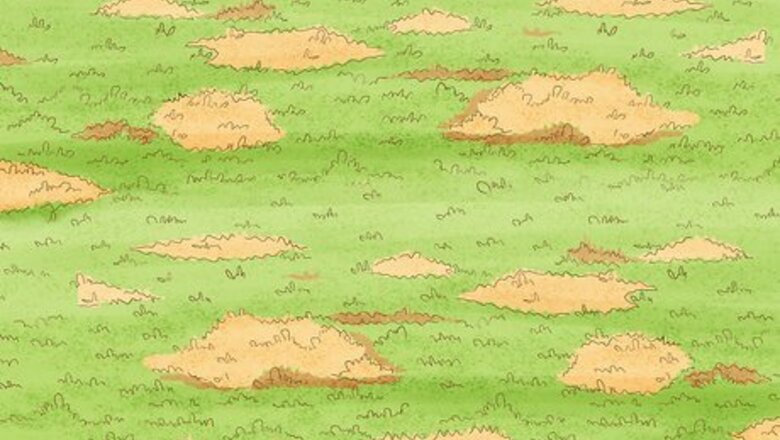
views
Identifying and Treating Urine-Damaged Grass
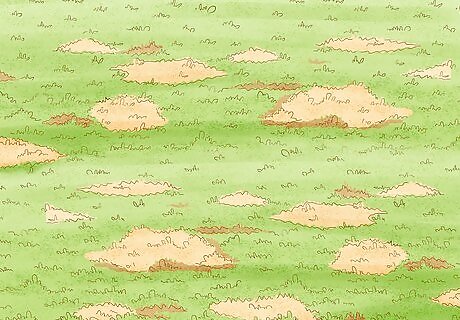
Identify spots caused by animal urine. Dead spots in your lawn caused by animal urine will be round, and generally all in a single area of your yard. The individual spots may range in diameter from a few inches to over a foot. Dogs especially tend to habitually urinate in a single area. Animal urine is not the only agent that can cause lawn damage and dead, brown spots of grass. Various lawn diseases and insect problems can cause similar looking spots, but will need to be treated by lawn professionals.
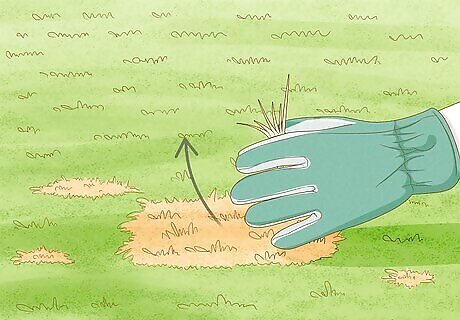
Tug firmly on the dead grass. Make sure to put on a pair of gardening gloves before touching the grass. In order to determine if the dead grass spot(s) are caused by an animal’s urine, you’ll need to grasp the dead grass firmly. Then give it a sharp tug; if the roots of the grass hold, it’s probably caused by urine. If you can easily pull the roots from the soil, you’re more likely dealing with a grub problem. If you suspect that you have a grub infestation in your lawn or that your lawn has a disease, contact a landscaping company or a lawn-care business for assistance.
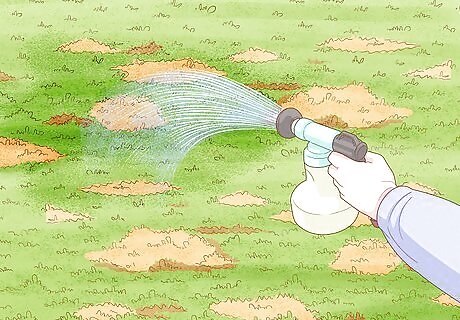
Apply a lawn repair treatment. These products are typically applied by spraying the treatment liquid to the affected area of grass. A good lawn-repair treatment will introduce healthy enzymes and nutrients to the urine-damaged soil. This will allow the grass roots to heal, and will encourage the damaged grass to re-grow. You should be able to find a lawn-repair product, specifically designed to repair grass damaged by pet urine, at your local pet store. You may also be able to find this product at a local supermarket, or at larger home improvement stores, such as Lowe’s or Home Depot.
Repairing Dead Grass Using Limestone
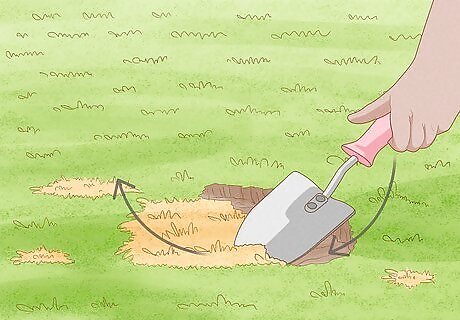
Remove as much of the dead grass as possible. You can do this by using a trowel, hoe, or small shovel to scrape the dead grass. Work on your hands and knees, and get as close to the roots as possible. While you don’t need to tear up the soil itself, try to scrape away as much of the dead blades and stems of grass as possible. You can dispose of the dead grass by burning it or throwing it in the trash.
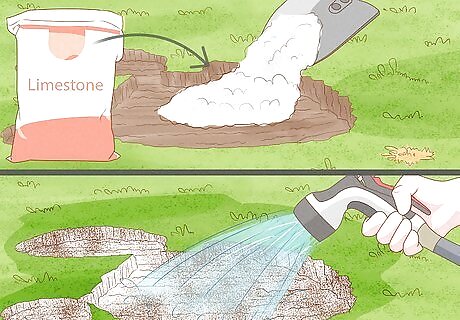
Sprinkle extra fine grind limestone over the area you’ve scraped. You can do this using the small shovel or trowel from the previous step. Coat the scraped area with a fine layer of the ground limestone. To avoid inhaling the fine limestone dust, you should wear a standard dust mask while working with the stone powder. You can purchase this at any hardware store. You may be able to purchase extra fine grind limestone at your local hardware store also. If not, check at larger home improvement stores, such as Lowe’s or Home Depot. Finally, see if there is a landscaping company in your area, as they may be willing to sell ground limestone.
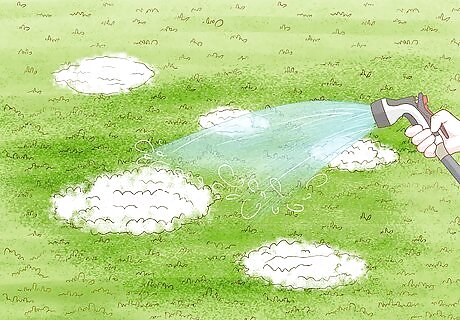
Water the area lightly. Use a hose or sprinkler to gently water the area with the limestone, and also dampen the surrounding grass. Getting the limestone and soil wet will help the limestone reduce and neutralize the acid that the soil has absorbed from the animal’s urine. Let the limestone set for a week. Don’t create runoff from your watering. If the water overflows and the limestone begins to run to a different part of the lawn, its effect will diminish.
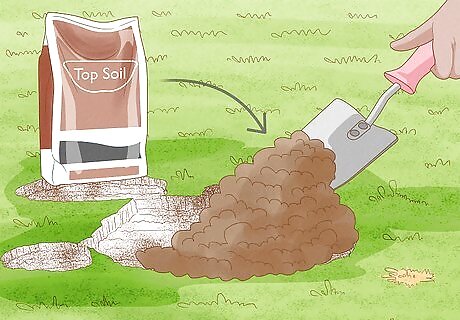
Cover with topsoil and grass seed. Once you’ve waited a week, you can generously cover the area with a fresh layer of topsoil. Then, sprinkle the area with a few handfuls of grass seed. Don’t worry about over-seeding; you can be liberal with your use of the seeds. Use your hand to pat down the grass seed into the soil, so that they can begin to grow. After you’ve patted down the grass seeds, you can use your hose or sprinkler to soak the soil with water. Be careful not to over-water, though, in which case the seeds will flow away. Topsoil and grass seed should both be available for purchase at your local hardware store, or at a plant nursery.
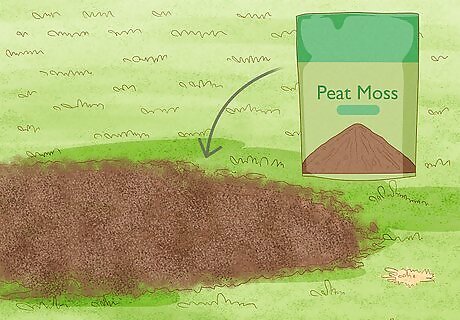
Top with peat moss. If you’ve generously seeded the area formerly damaged by pet urine, but the grass is growing slowly, you can top the area with peat moss. This light moss will hold moisture in, and so encourage the grass seeds to sprout without drying out. You can find peat moss at a local plant nursery, or through a landscaping supply store. If the majority of the initial grass seeds have not sprouted or died, you may need to re-seed before you put down the layer of peat moss.
Preventing Your Pet from Causing Urine Damage
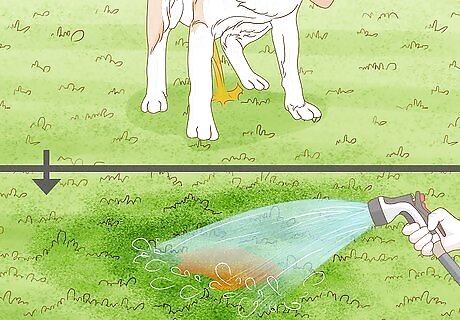
Water a patch of lawn after a dog urinates on it. If your dog—or a neighbor’s dog—has urinated on a patch of your lawn, you can reduce the damage by watering the area. Use a hose or a large watering can and pour a generous amount of water over the spot where the dog urinated. As long as you have a mature lawn, you don’t need to worry about over-watering the patch of grass. This will help by diluting the concentrated acid in the dog’s urine, and washing the urine off of the grass.

Apply baking soda to neutralize the acid. To use this method, dissolve 2 tablespoons of baking soda in a gallon of water (you can do this in a large watering can or pitcher). Then, pour the baking soda mixture over the spot where the pet has urinated. The baking soda will neutralize the ammonia and nitrogen present in dogs’ urine, and prevent the soil from turning brown. As an added benefit, baking soda is harmless to dogs. So, if your dog walks through the baking soda-soaked grass and licks their feet, they won’t be harmed.
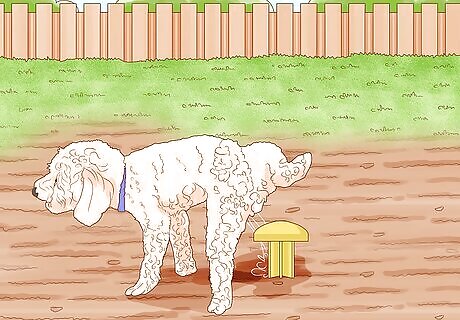
Teach your dog to pee in a specific area. If you don’t want brown dog-urine spots across your lawn, you can train your dog to only urinate in one concentrated area. You can teach your dog to pee in a single location by sticking a “pee post” in the ground. “Pee posts” are treated with pheromones and designed to attract your dog’s attention so that they urinate on the post. You can purchase a “pee post” at your local pet-supply store. If part of your lawn is covered with stones or mulch, have your dog urinate there, since those materials won’t be harmed by the acidity.













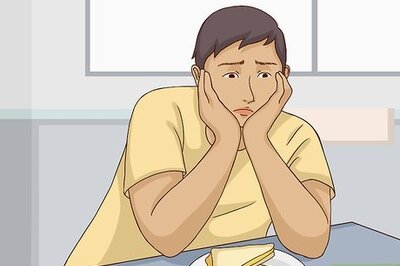


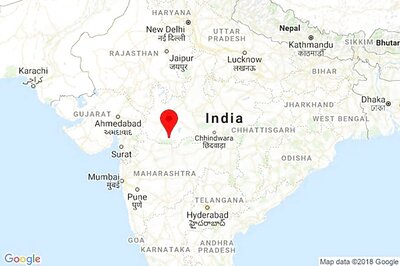

Comments
0 comment